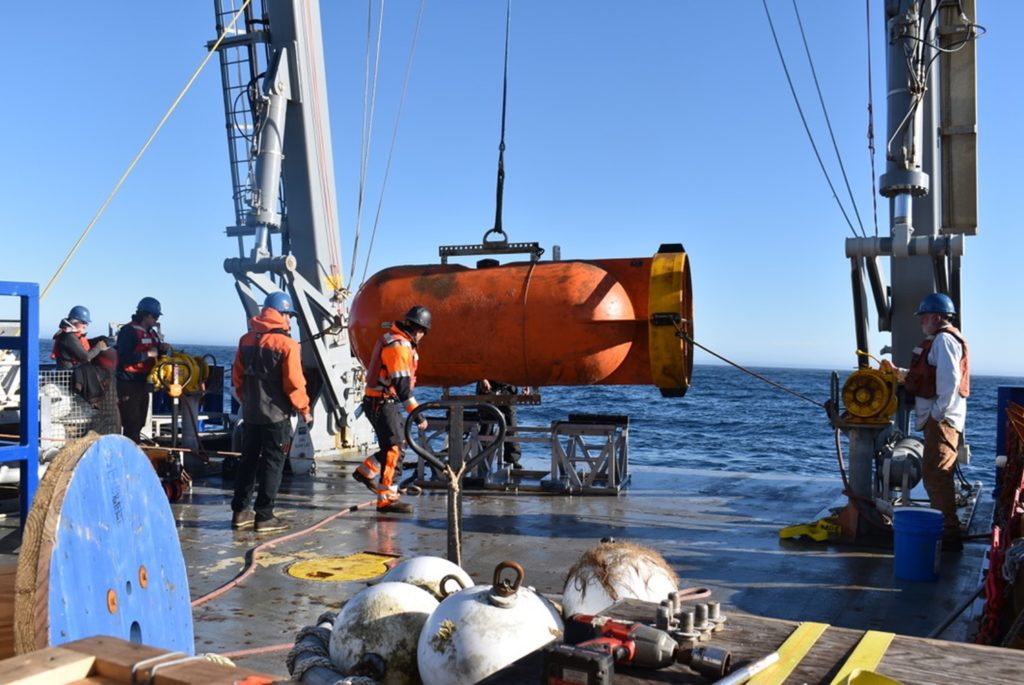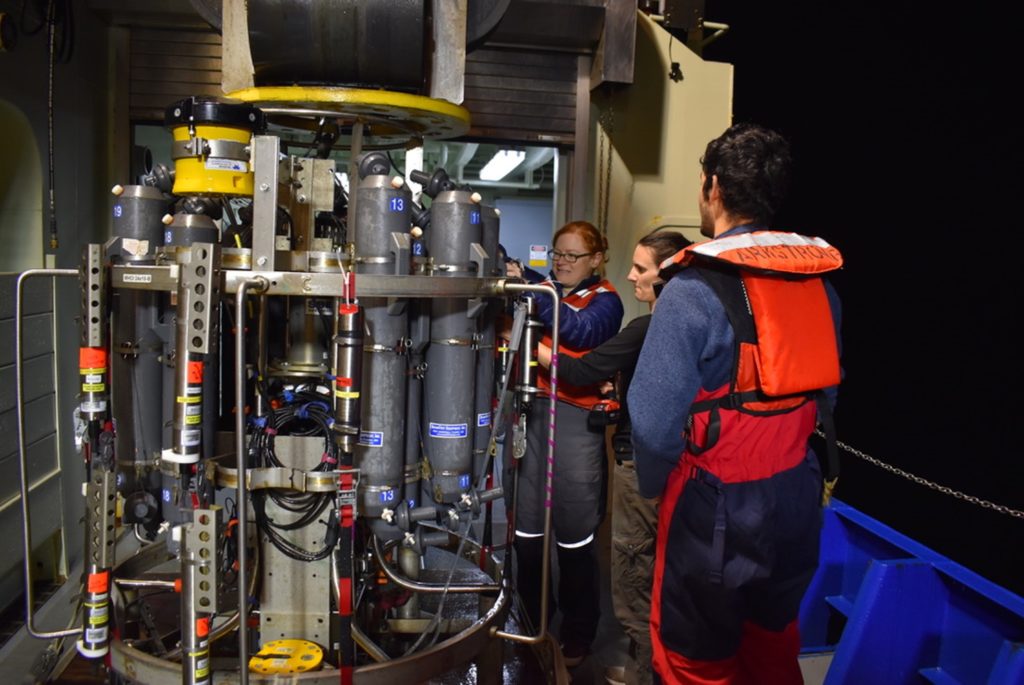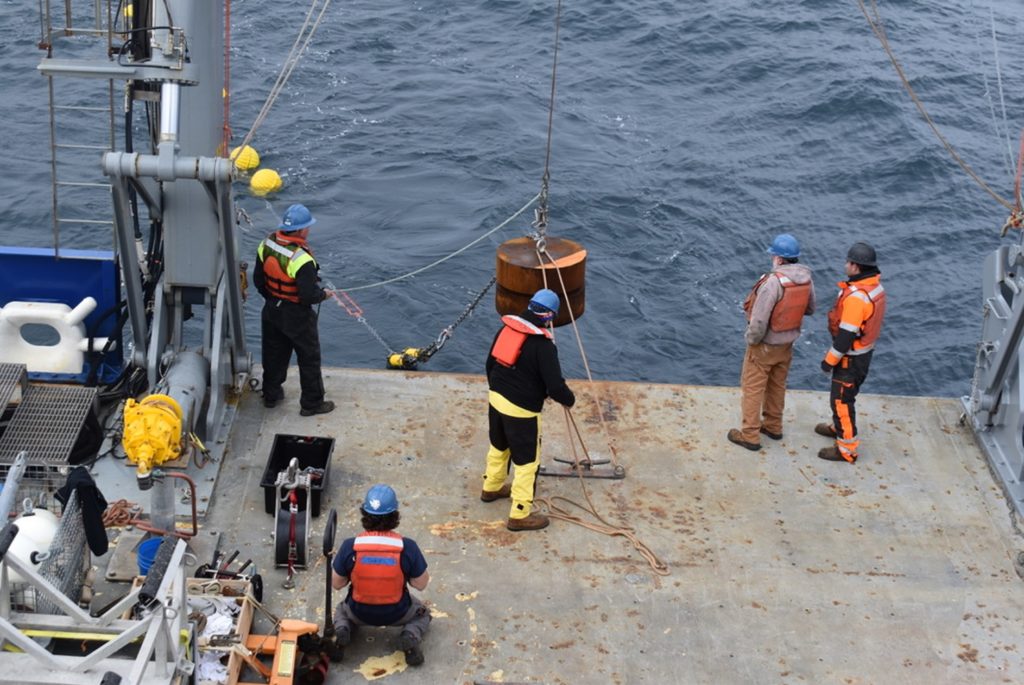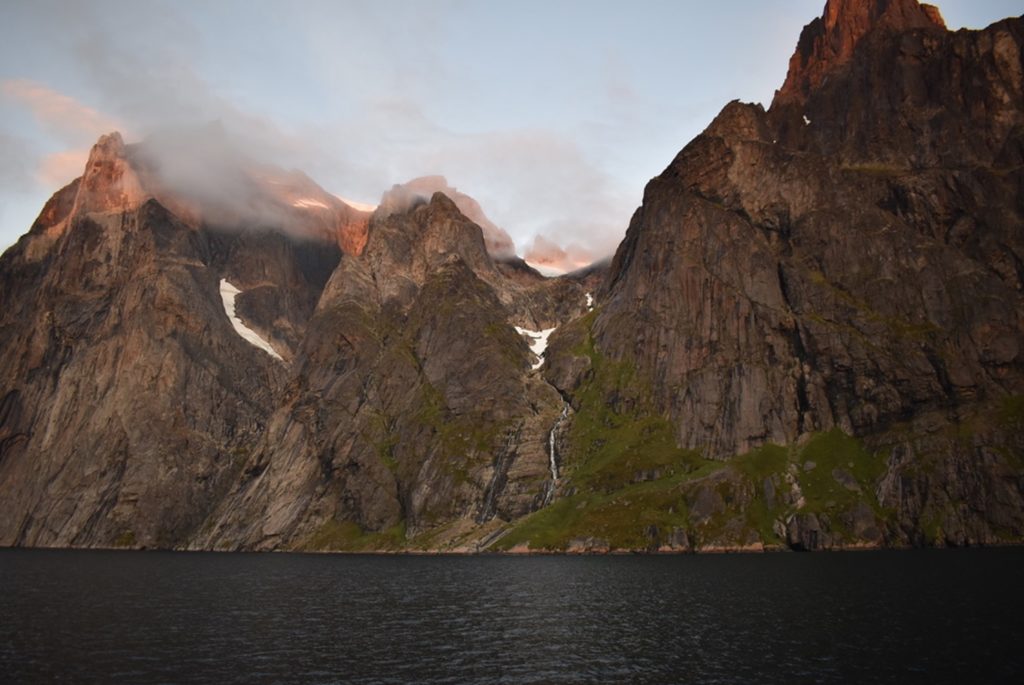By Hiroki Nagao
On 19 August 2022, the R/V Neil Armstrong set sail from Reykjavík to the cold, stormy waters of the Subpolar North Atlantic. This region consists of a complex network of surface and deep ocean currents, which together play a critical role in the Earth’s climate system via the transport of heat, freshwater, and dissolved gases. Among the objectives of this cruise was to service the Cape Farewell (CF) mooring array, located off the coast of Southeast Greenland.
Each mooring in the CF array consists of a set of instruments that are fixed to a cable, supported by an anchor and a set of floats. These instruments include microCAT sensors, oxygen optodes, and Acoustic Doppler Current Profilers (ADCPs), which measure temperature/salinity/pressure, dissolved oxygen, and current velocity, respectively. These instruments stay at a fixed depth in the water column for two years and are then serviced and replaced. Mooring data are critical for obtaining continual records of oceanographic variables and thereby inferring the temporal variability in ocean circulation and associated fluxes of heat, freshwater, and dissolved gases.
Servicing a mooring first involves its recovery. The technicians from the Woods Hole Oceanographic Institution (WHOI) disconnect the mooring line from the anchor by sending an acoustic ping from the vessel to the release system. Once the mooring line reaches the surface, the whole crew jumps into action to bring all the floats and instruments, one by one, to the deck. The ship carefully maneuvers to the floats and then, the crew works tirelessly to catch the float with a hook attached to a rope. We watch with much anticipation as the float is carefully placed on a stand. Next comes the instruments, from the shallowest to the deepest. We record the serial number of each instrument and clean the grime and the growth that has covered the instruments over the past two years. Finally, the acoustic releases are brought back to the surface.

After the recovery, all the instrument data are downloaded into the computer. We also perform calibration dips of the microCAT sensors and the oxygen optodes. This involves attaching the sensors to the CTD rosette, so that the sensor data can be compared with the measurements collected by Niskin bottles and CTD instruments on the rosette. For example, I found the oxygen optode measurements to be greater than the oxygen concentration determined from titrations of water samples from the Niskin bottles.

Once the data processing is finished, the re-deployment of the mooring takes place. The WHOI technicians carefully attach all the mooring components to the cable one by one, ensuring that none of them gets damaged. The re-deployment lasts for 1-3 hours, depending on the length of the mooring line. Once all the floats and instruments are sent off the deck, the technicians attach the release system and the anchor to the line, before dropping the anchor to the seafloor.

The whole mooring operation along the CF array was challenging. Our plans were contingent on the time of day and weather, since mooring operations are not safe at night or rough waves. Thus, we interspersed the mooring operations with CTD casts off the coast of Southeast Greenland. Moreover, we had to contend with unexpected circumstances in the mooring. For example, several ADCPs from the CF7 mooring suffered extensive damage, possibly because a portion of the mooring line broke off under rough weather conditions. Despite these obstacles, we finished all the CF mooring operations by the end of the second week of the cruise. All our efforts had been paid, as we were treated with picturesque views of the Prince Christian Sound the following day.
